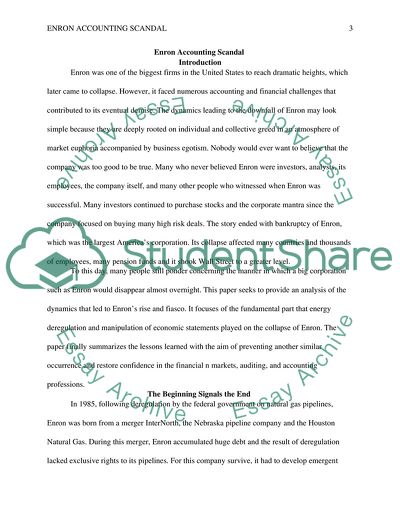Cite this document
(Enron Scandal focusing on the accounting issues related to the scandal Research Paper, n.d.)
Enron Scandal focusing on the accounting issues related to the scandal Research Paper. https://studentshare.org/finance-accounting/1846394-enron-scandal-focusing-on-the-accounting-issues-related-to-the-scandal
Enron Scandal focusing on the accounting issues related to the scandal Research Paper. https://studentshare.org/finance-accounting/1846394-enron-scandal-focusing-on-the-accounting-issues-related-to-the-scandal
(Enron Scandal Focusing on the Accounting Issues Related to the Scandal Research Paper)
Enron Scandal Focusing on the Accounting Issues Related to the Scandal Research Paper. https://studentshare.org/finance-accounting/1846394-enron-scandal-focusing-on-the-accounting-issues-related-to-the-scandal.
Enron Scandal Focusing on the Accounting Issues Related to the Scandal Research Paper. https://studentshare.org/finance-accounting/1846394-enron-scandal-focusing-on-the-accounting-issues-related-to-the-scandal.
“Enron Scandal Focusing on the Accounting Issues Related to the Scandal Research Paper”. https://studentshare.org/finance-accounting/1846394-enron-scandal-focusing-on-the-accounting-issues-related-to-the-scandal.


